
Old English to the Twentieth century overview of British literature.
- Subject:
- Arts and Humanities
- Literature
- Material Type:
- Textbook
- Author:
- unknown
- Date Added:
- 06/20/2022

Old English to the Twentieth century overview of British literature.
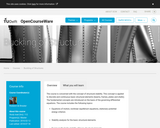
The course is concerned with the concept of structural stability. This concept is applied to discrete and continuous basic structural elements (beams, frames, plates and shells). The fundamental concepts are introduced on the basis of the governing differential equations. The course includes the following topics:
*Equations of motion, nonlinear equilibrium equations, stationary potential energy criterion.
*Stability analysis for the basic structural elements.
*Design methods for stability of basic structural elements.
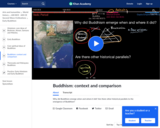
Why did Buddhism emerge when and where it did? Are there other historical parallels to the emergence of Buddhism?
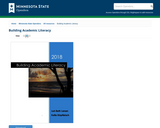
While many study skills, composition and reading skills texts separate these activities into discrete skills to be learned separately, this books recognizes that these skills are interconnected. A student who struggles with the reading will have a hard time writing about it or discussing it. A student who has inadequate strategies for listening to lectures will struggle to see the connections between the lecture and the reading. Therefore, this book moves away from the “skills and drills” texts that are so common in reading and writing textbooks. Instead, this book features process and provides opportunities for students (and instructors) to think about the best ways to approach academic tasks. For example, a “skills and drills” oriented book might teach students how to take Cornell Notes and use graphic organizers, but it does not provide any information for students that would allow them to decide when it would be best to choose one note taking method over the other. This book’s main focus is helping students develop that sort of judgement.
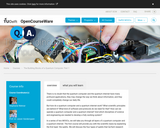
There is no doubt that the quantum computer and the quantum internet have many profound applications, they may change the way we think about information, and they could completely change our daily life.
But how do a quantum computer and a quantum internet work? What scientific principles are behind it? What kind of software and protocols do we need for that? How can we operate a quantum computer and a quantum internet? And which disciplines of science and engineering are needed to develop a fully working system?
In a series of two MOOCs, we will take you through all layers of a quantum computer and a quantum internet. The first course will provide you with the scientific basis by explaining the first layer: the qubits. We will discuss the four types of qubits that QuTech research center at Delft University of Technology focuses on: topological qubits, Spin qubits, Trans qubits and NV Centre qubits. We will teach you the working principles of qubits and, at the same time, the working principles of a computer made of these qubits.
In the upcoming second course, we will introduce the other layers needed to build a quantum computer and a quantum internet, such as the micro-architecture, compilers, quantum error correction, repeaters and quantum algorithms.
These two courses offer you an opportunity to deepen your knowledge by continuing the journey started in our first MOOC, which focused on the applications of a quantum computer and a quantum internet.
Note that these courses offer a full overview of the layers of a quantum computer and a quantum internet, and therefore they will not go into too much detail per layer. For learners seeking to fully understand one specific topic we can recommend other courses authored by QuTech:
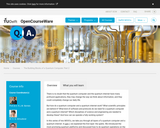
There is no doubt that the quantum computer and the quantum internet have many profound applications, they may change the way we think about information, and they could completely change our daily life.
But how do a quantum computer and a quantum internet work? What scientific principles are behind it? What kind of software and protocols do we need for a quantum computer and a quantum internet? Which disciplines of science and engineering are needed to develop these? And how can we operate a fully working system?
In this series of two courses, we take you through all layers of a quantum computer and a quantum internet. In part 1 we explained the first layer: the qubits. We introduced the most promising quantum platforms and discussed how to do quantum operations on the physical qubits. In part 2 we will introduce the other layers needed to build and operate a quantum computer and a quantum internet, such as the quantum classical interface, micro-architecture, compilers, quantum error correction, networks and protocols and quantum algorithms.
These two courses offer you an opportunity to deepen your knowledge by continuing the journey started in our first course, which focused on the applications of a quantum computer and a quantum internet.
Note that these courses offer a full overview of the layers of a quantum computer and a quantum internet, and therefore they will not go into too much detail per layer. For learners seeking to fully understand one specific topic we can recommend other courses authored by QuTech:
In the field of Quantum Internet: Quantum Cryptography
In the field of topological phenomena: Topology in Condensed Matter
This course is authored by experts from the QuTech research center at Delft University of Technology. In the center, scientists and engineers work together to enhance research and development in quantum technology. QuTech Academy’s aim is to inspire, share and disseminate knowledge about the latest developments in quantum technology.
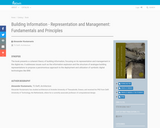
The book presents a coherent theory of building information, focusing on its representation and management in the digital era. It addresses issues such as the information explosion and the structure of analogue building representations to propose a parsimonious approach to the deployment and utilization of symbolic digital technologies like BIM.
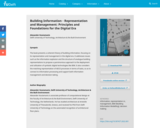
The book presents a coherent theory of building information, focusing on its representation and management in the digital era. It addresses issues such as the information explosion and the structure of analogue building representations to propose a parsimonious approach to the deployment and utilization of symbolic digital technologies like BIM. It also considers the matching representation of AECO processes in terms of tasks, so as to connect to information processing and support both information management and decision taking.
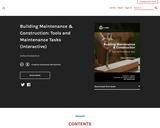
Long Description:
Peer Reviewer Comments
Phil Johnson, Architectural Project Manager, Maui, Hawaii “The book is a wealth of information. It is very clearly and logically presented.” “While basic knowledge level differs from trade to trade, I believe that if a student mastered information presented in this book, they would be several steps above “entry Level”.” “Even beginning trade apprentices may find some of the areas challenging.” “This Book would be a good resource and reference for teaching introductory trade course.”
Rick Rutiz, Executive Director, Ma Ka Hana Ka ‘Ike Building Program “Cliff is a repository of building and construction techniques, skills, and information, all of which is found in this book. But the real strength of his teaching ability is the rapport he creates with his students. As the director of the vocational training program Ma Ka Hana Ka ‘Ike, I’ve had the privilege of watching Cliff bring construction theory to life — not just with great expertise, but with heart. Now he’s put this knowledge in book form to share with all of you.”
Word Count: 45404
ISBN: 9781948027021
(Note: This resource's metadata has been created automatically by reformatting and/or combining the information that the author initially provided as part of a bulk import process.)
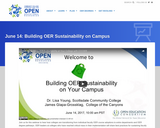
Join us for this webinar to hear how colleges are transitioning from individual faculty OER course adoptions to entire departments and OER degree pathways. OER leaders at colleges who have reached critical mass in their implementation will share best practices for sustaining faculty engagement, student involvement, project funding, and institutional commitment to OER adoption for the enhancement of teaching and learning.
Our featured speakers are both longtime community college leaders in the OER movement at regional and district levels. They will engage each other in discussions on the themes mentioned above and invite questions from webinar attendees.
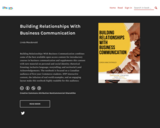
Short Description:
Building Relationships With Business Communication combines some of the best available open access content for introductory courses in business communication and supplements this content with new material on personal and social identity; rhetorical listening; inclusive language; storytelling; and territorial Land Acknowledgements. The textbook is focused on a Canadian audience of first-year Commerce students. H5P interactive content, the infusion of real world examples, and an engaging layout make this textbook highly readable for this audience. INSTRUCTORS: If you adopt Building Relationships with Business Communication in part or in whole, as a core or supplemental resource, please report your adoption to https://forms.office.com/r/MDgAuHisSP. Thank you!
Long Description:
Building Relationships With Business Communication is aimed at first-year students of Commerce. The book presents material from Business Communication for Success [Author removed at request of original publisher]; Web Literacy for Student Fact-Checkers by Mike Caulfield; Business Presentation Skills by Lucinda Atwood and Christian Westin; Professional Communications by Jordan Smith, Melissa Ashman, eCampusOntario, Brian Dunphy, Andrew Stracuzzi; and APA Style Citation Tutorial by Sarah Adams and Debbie Feisst. This material is supplemented with new material on personal and social identity; rhetorical listening; inclusive language; storytelling; and territorial Land Acknowledgments. The principles of justice, equity, diversity, and inclusion are woven throughout the textbook. Interactive H5P content enhances the student experience.
Part I includes chapters on developing business relationships. The first two chapters explain the importance of effective business communication and the responsibilities the students will have as business communicators. Next, students consider the ways in which the communication context, the purpose of the message, the audience for the communication, and the channel of communication impact their writing or presenting strategy. The final chapter of Part 1 considers the importance of inclusive language in developing and maintaining business relationships.
Part 2 presents tools for effective communication and primarily focuses on rhetoric. Rhetorical listening and visual rhetoric are often overlooked elements of persuasion. These strategies are discussed as well as the classical rhetorical strategies of logos, ethos, and pathos.
Part 3 focuses on preparing and delivering business presentations. This section addresses speech anxiety, ways to alleviate this anxiety through clear presentation structures, and the importance of storytelling in engaging an audience.
Part 4 concerns written forms of communication including email, memos, letters, and reports. Techniques to develop and maintain a positive audience relationship are addressed throughout. An additional resource on APA Style referencing is provided in Part 5.
INSTRUCTORS: If you adopt Building Relationships with Business Communication in part or in whole, as a core or supplemental resource, please report your adoption to https://forms.office.com/r/MDgAuHisSP. Thank you!
Word Count: 72357
ISBN: 978-1-7781696-5-6
(Note: This resource's metadata has been created automatically by reformatting and/or combining the information that the author initially provided as part of a bulk import process.)
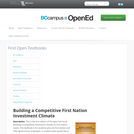
This is the first edition of the open text book Building a Competitive Investment Climate on First Nation Lands. This textbook is for students who are First Nation and tribal government employees or students who would like to work for or with First Nation and tribal governments. The purpose of this textbook is to help interested First Nation and tribal governments build a competitive investment climate. Work began on this text book in early 2012 with a generous grant from the Donner Canadian Foundation. Financial support was also provided by the First Nations Tax Commission and the Tulo Centre.
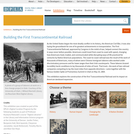
As the United States began the most deadly conflict in its history, the American Civil War, it was also laying the groundwork for one of its greatest achievements in transportation. The First Transcontinental Railroad, approved by Congress in the midst of war, helped connect the country in ways never before possible. Americans could travel from coast to coast with speed, changing how Americans lived, traded, and communicated while disrupting ways of life practiced for centuries by Native American populations. The coast-to-coast railroad was the result of the work of thousands of Americans, many of whom were Chinese immigrant laborers who worked under discriminatory pressures and for lower wages than their Irish counterparts. These laborers braved incredibly harsh conditions to lay thousands of miles of track. That trackthe work of two railroad companies competing to lay the most miles from opposite directionscame together with the famous Golden Spike at Promontory Summit in Utah on May 10, 1869. This exhibition explores the construction of the first Transcontinental Railroad and its impact on American westward expansion. This exhibition was created as part of the DPLAs Digital Curation Program by the following students as part of Professor Krystyna Matusiak's course "Digital Libraries" in the Library and Information Science program at the University of Denver: Jenifer Fisher, Benjamin Hall, Nick Iwanicki, Cheyenne Jansdatter, Sarah McDonnell, Timothy Morris and Allan Van Hoye.
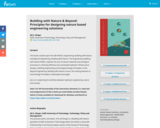
This book is based upon the edX MOOCs Engineering: Building with Nature and Beyond Engineering: Building with Nature. The Engineering: Building with Nature MOOC, explores the use of natural materials and ecological processes in achieving effective and sustainable hydraulic infrastructure designs, distilling Engineering and Ecological Design Principles. In the Beyond Engineering: Building with Nature course, the missing element of Social Design Principles is developed and taught.
Join us in exploring the interface between hydraulic engineering, nature and society!
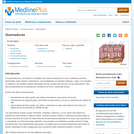
This patient education program explains burns, the different degrees of burns, and how they may be treated. This resource is a MedlinePlus Interactive Health Tutorial from the National Library of Medicine, designed and developed by the Patient Education Institute.
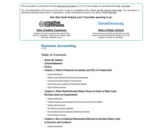
We view this textbook as a guide. In constructing these seventeen chapters, we have worked to lead you on a voyage through the world of business and financial reporting. We want to help you attain a usable knowledge of the principles of financial accounting as well as an appreciation for its importance and logic. By learning its theory, presentation, and procedures, individuals become capable of using financial accounting to make prudent business decisions. That is an important goal regardless of the direction of your career. We have relied on our experience as teachers to highlight the aspects of this material that make it interesting, logical, and relevant.
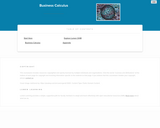
This course provides an introduction to applied concepts in Calculus that are relevant to the managerial, life, and social sciences. Students should have a firm grasp of the concept of functions to succeed in this course. Topics covered include derivatives of basic functions and how they can be used to optimize quantities such as profit and revenues, as well as integrals of basic functions and how they can be used to describe the total change in a quantity over time.
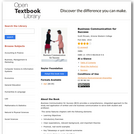
Business Communication for Success (BCS) provides a comprehensive, integrated approach to the study and application of written and oral business communication to serve both student and professor.
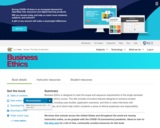
Business Ethics is designed to meet the scope and sequence requirements of the single-semester business ethics course. This title includes innovative features designed to enhance student learning, including case studies, application scenarios, and links to video interviews with executives, all of which help instill in students a sense of ethical awareness and responsibility.
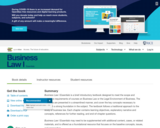
Business Law I Essentials is a brief introductory textbook designed to meet the scope and sequence requirements of courses on Business Law or the Legal Environment of Business. The concepts are presented in a streamlined manner, and cover the key concepts necessary to establish a strong foundation in the subject. The textbook follows a traditional approach to the study of business law. Each chapter contains learning objectives, explanatory narrative and concepts, references for further reading, and end-of-chapter questions.
Business Law I Essentials may need to be supplemented with additional content, cases, or related materials, and is offered as a foundational resource that focuses on the baseline concepts, issues, and approaches.